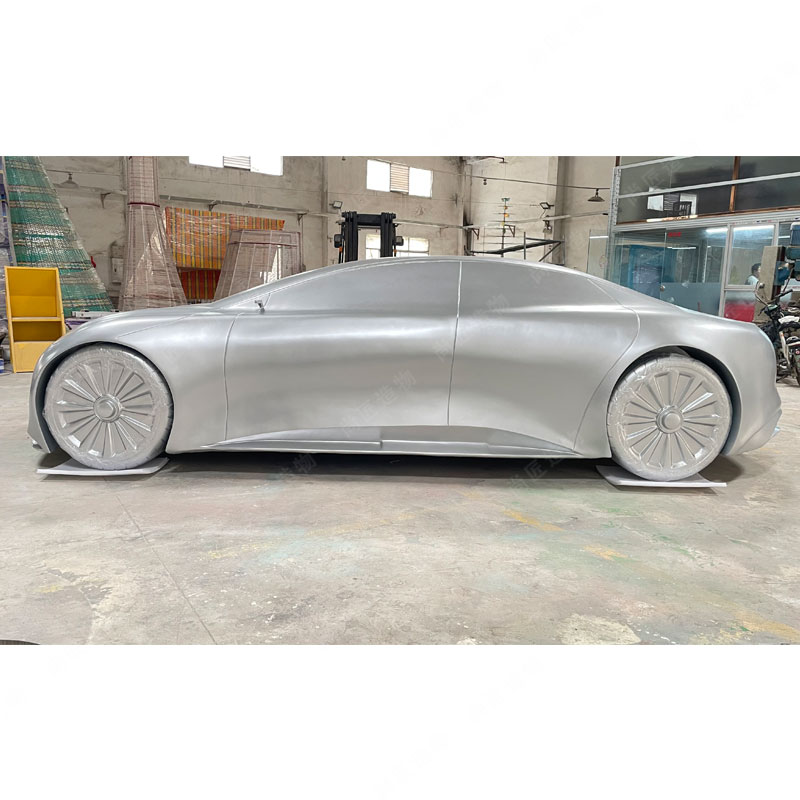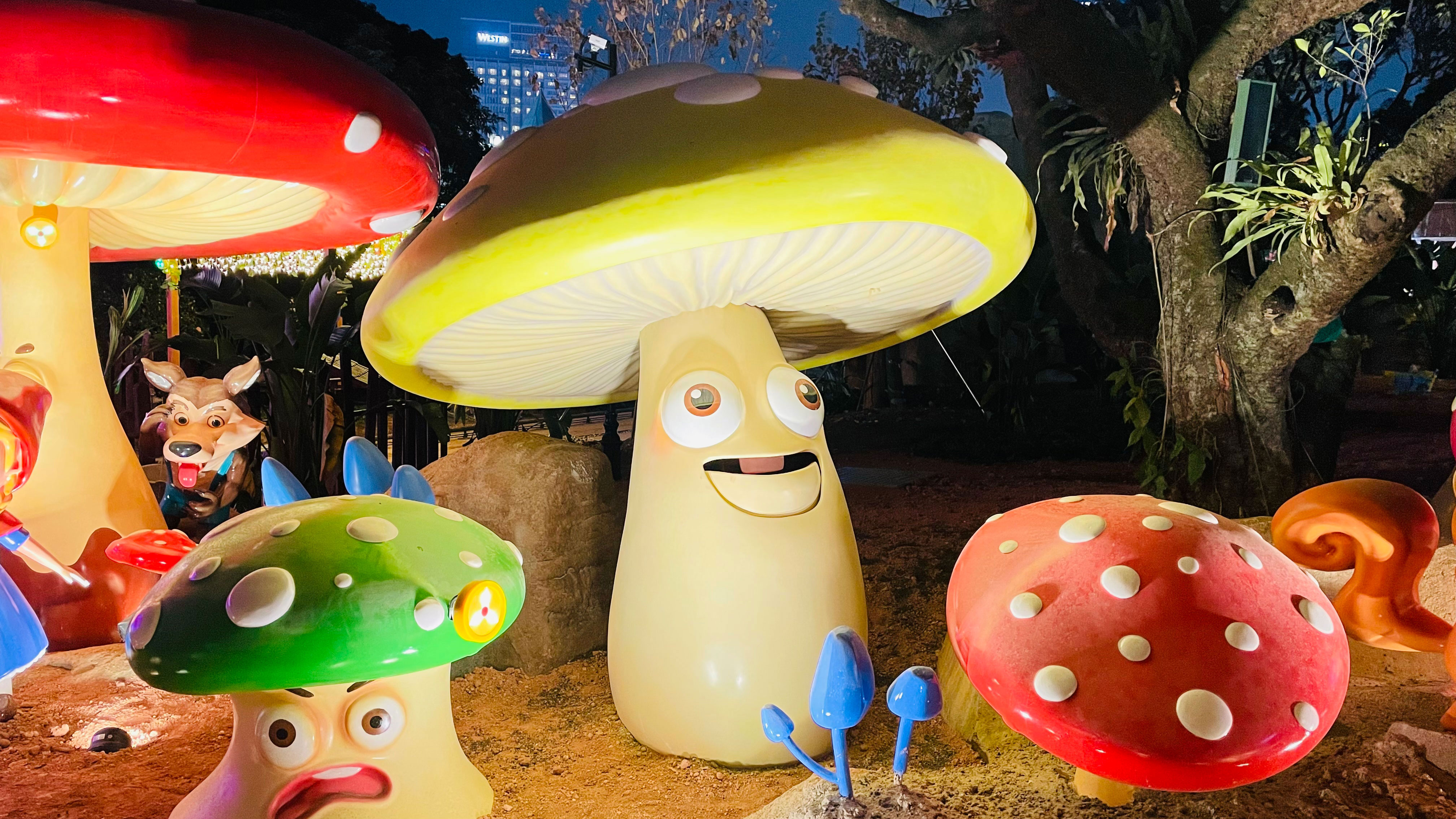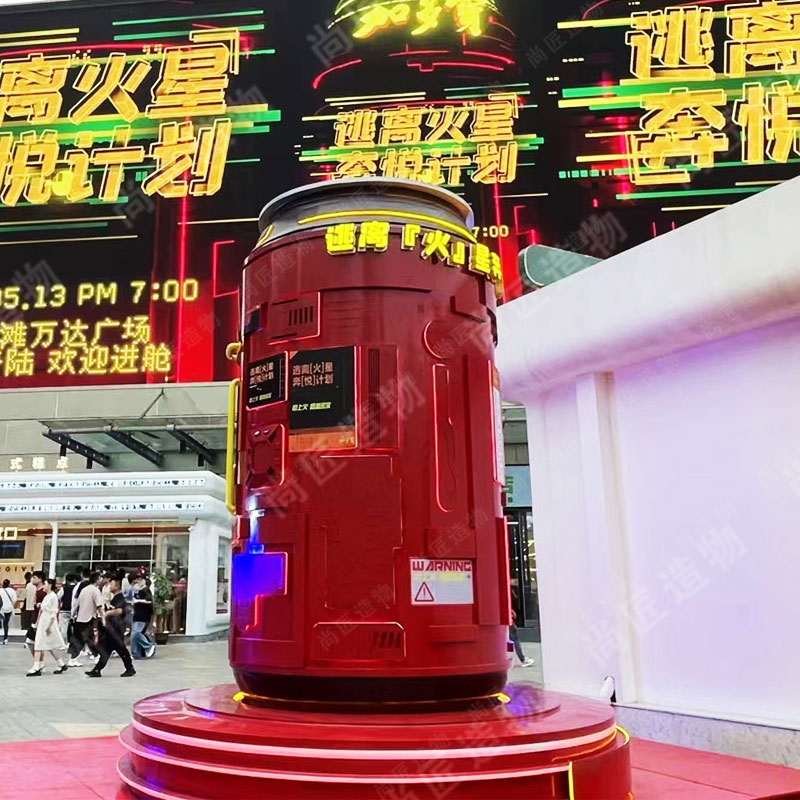Branded mascot sculptures play a crucial role in shaping community identity and fostering connections among diverse groups. They act as visual landmarks that represent values and traditions, encouraging participation in events and enhancing school spirit. Statues such as UToledo's Rocky and Rocksy, alongside Augustus, serve as vital gathering points for students, alumni, and local residents. By providing a shared space for engagement, these icons not only symbolize community pride but also inspire collaboration among various audiences. Moreover, the presence of mascot sculptures at events promotes a sense of belonging and unity, reinforcing the cultural narratives that define each institution's identity over time.
The Role of Branded Mascot Sculptures in Strengthening Community Identity
Branded mascot sculptures serve as powerful symbols of community identity, often reflecting the values and spirit of the institutions they represent. These large-scale figures create a tangible connection for students, alumni, and local residents, fostering a sense of belonging and pride. For example, statues like Augustus and the life-sized figures of Rocky and Rocksy at UToledo not only enhance campus aesthetics but also encourage engagement among diverse groups. The sculptures become gathering points during events, further strengthening community bonds. Celebrating shared experiences around these mascots helps to solidify cultural narratives that resonate across generations, promoting unity within the community. As these symbols grow in recognition, they amplify the collective identity that defines each institution while inspiring deeper connections among its members.
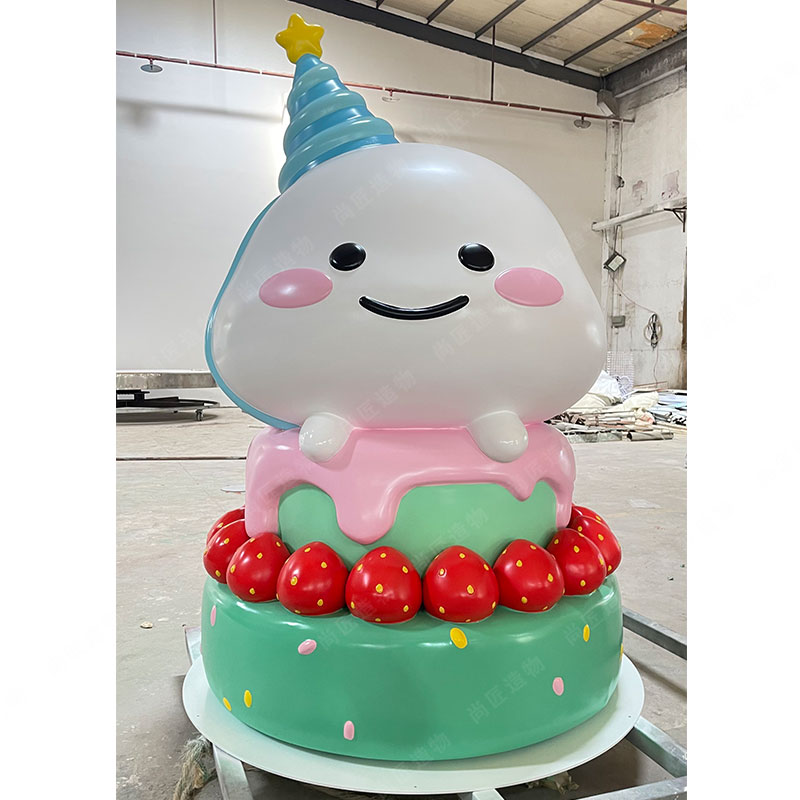
How Mascot Statues Foster School Pride and Cultural Connectivity
Mascot statues serve as vital symbols of school spirit, uniting students, alumni, and faculty under a shared identity. By physically representing institutions, these sculptures create a sense of belonging among community members. For instance, when students gather near statues like UToledo's Rocky and Rocksy, they engage in traditions that strengthen bonds. These icons not only inspire pride but also encourage participation in school events and activities. Moreover, mascot sculptures often become the backdrop for celebrations and gatherings, fostering connections among diverse groups on campus. The presence of such statues can elevate enthusiasm during events, reinforcing the message that everyone plays a role in upholding the school's legacy. Ultimately, they create a space for shared experiences that deepen cultural ties within the community. For more on this topic, you can explore IP character sculpture.
Branded Mascots: Icons of Spirit and Unity in Educational Institutions
Branded mascot sculptures serve as powerful symbols of identity and unity within educational institutions. They not only represent the spirit and culture of a school but also foster a sense of belonging among students, staff, and alumni. Statues like Augustus at various campuses and the newly unveiled Rocky and Rocksy at UToledo create visual focal points that enhance community pride. These sculptures become gathering spots during events, igniting school spirit and camaraderie among diverse groups. As they are increasingly integrated into campus life, they reinforce the idea that these institutions are not just places of learning but vibrant communities where tradition and celebration coexist. The craftsmanship behind fiberglass sculpturesalso reflects the dedication to quality that further elevates these mascots in the eyes of the community, making them icons that embody unity and pride.
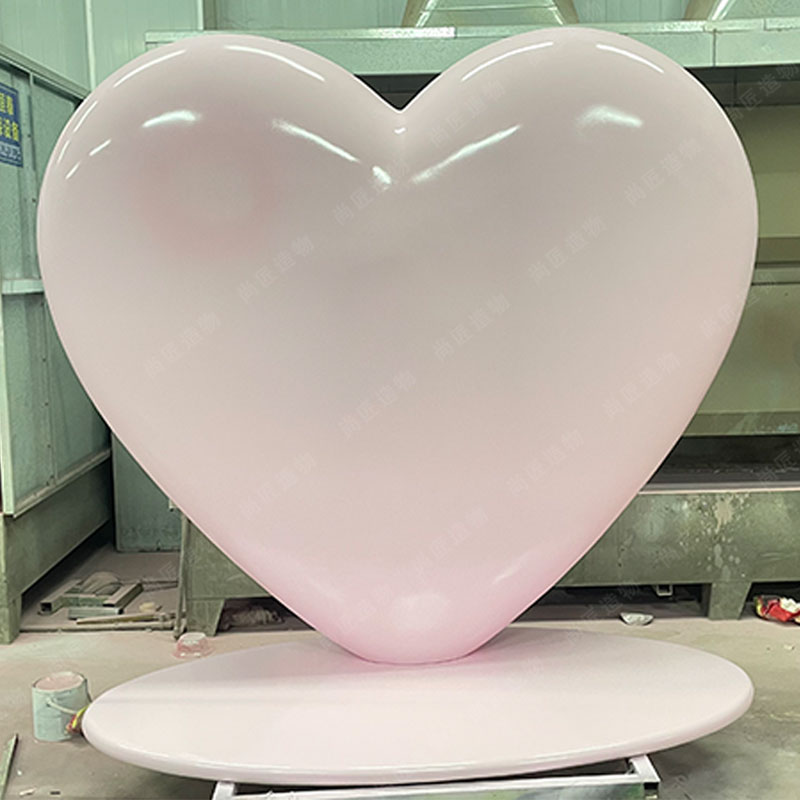
Transforming Community Spaces: The Impact of Mascot Sculptures
Branded mascot sculptures play a pivotal role in transforming community spaces by serving as symbols of pride and unity. These iconic figures not only enhance the aesthetic of campuses and event venues but also create a gathering point for students, alumni, and community members. For instance, the recent installation of UToledo's Rocky and Rocksy statues has turned Centennial Mall into a lively hub, where individuals can connect over shared experiences and traditions. Similarly, the statue of Augustus acts as a "beacon of spirit," motivating students and fostering a sense of belonging. By instilling pride, these sculptures encourage engagement in events, enhancing cultural connectivity within the community. As people gather around these representations, they collectively celebrate their values and identity, reinforcing the bond among different groups?
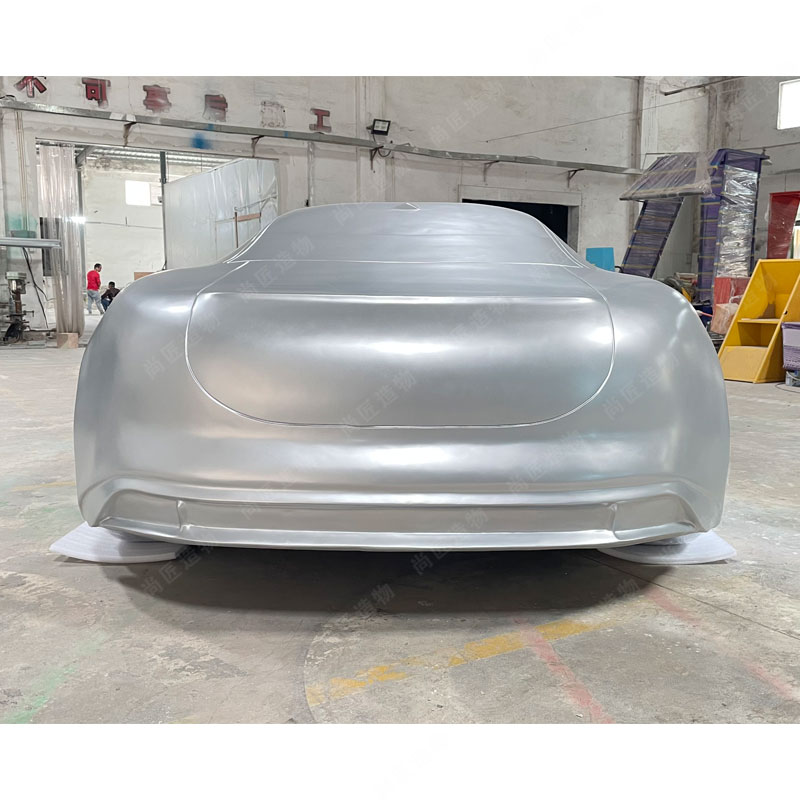
Celebrating Tradition: The Importance of Mascot Statues in Events
Mascot statues play a crucial role in events, serving as symbols of unity, pride, and tradition for institutions. These larger-than-life figures often take center stage during celebrations, bringing together students, alumni, and community members. For example, unveilings of new mascots at events create a sense of anticipation and excitement, reinforcing the connection between past and present. Statues like Augustus and UToledo's Rocky and Rocksy serve as tangible representations of each institution’s history and culture. Their presence not only enhances the atmosphere but also provides opportunities for photo-taking, fostering connections among attendees as they share these moments on social media. In this way, mascot statues contribute significantly to the memorable experiences that define community events and celebrations.

Brand Recognition Through Mascots: A Creative Avenue for Communities
Branded mascot sculptures serve as powerful tools for enhancing community identity and recognition. These figures not only represent schools, businesses, or sports teams but also become central symbols of pride within their respective communities. For example, the statue of Augustus embodies the spirit of collaboration and school pride, attracting both students and locals alike. Similarly, UToledo's Rocky and Rocksy contribute to a sense of belonging on campus, fostering connections among diverse groups. By creating visually striking installations like these, institutions effectively communicate their values while encouraging interaction and inclusivity. Moreover, the presence of such statues adds to local cultural richness; they inspire conversations and shared experiences that enhance community cohesion. Through these artistic representations, schools can solidify their brand while engaging audiences in meaningful ways that resonate with shared identity. Realistic sculptureenables institutions to take their branding efforts to a new level, effectively merging art with community spirit.
Cultivating Collegiality: How Mascots Bring Together Diverse Audiences
Branded mascot sculptures play a vital role in uniting various groups within a community. They serve as touchpoints where students, alumni, and community members can gather, fostering a sense of belonging. These statues are not just decorative; they evoke school spirit and pride, drawing individuals from different backgrounds together. For instance, during events like homecoming or sporting activities, mascots often become the centerpiece of celebrations.
"Mascots are more than symbols; they create connections among diverse audiences."
When people come together around their mascot, it reinforces shared values and enhances mutual respect. The excitement generated by these sculptures encourages dialogue and collaboration among various groups within educational institutions, forming a tight-knit community spirit. Additionally, engaging activities associated with mascots can enhance participation and create lasting memories that unite individuals in the common goal of celebrating their institution's identity.
| Benefits of Mascot Sculptures | Examples |
|---|---|
| Enhanced school pride | Homecoming celebrations |
| Increased community engagement | Local fundraising events |
| Creation of lasting connections | Alumni gatherings |
| Boosted participation in events | Sporting events and pep rallies |

The Significance of Augustus and Others: A Look at Iconic Branded Sculptures
Branded mascot sculptures like Augustus serve as powerful symbols for educational institutions, embodying their values and aspirations. These statues not only represent the spirit of their communities but also strengthen the bond among students, faculty, and alumni. For instance, just as UToledo's Rocky and Rocksy enhance campus pride, the presence of Augustus fosters an atmosphere of unity and celebration. Such sculptures often become gathering points during events, prompting shared memories and experiences that bolster community spirit. Moreover, by highlighting local traditions and histories, these mascots help create a shared identity that resonates across generations, ensuring their legacy endures. Statues like Augustus make a lasting impact by establishing a visual connection that enhances belonging within the campus ecosystem.
Conclusion
The impact of branded mascot sculptures extends beyond aesthetic appeal; they play an essential role in enhancing community identity and fostering connections among individuals. Statues like Augustus and UToledo's Rocky and Rocksy serve as memorable focal points that invite engagement and participation from students, alumni, and local residents alike. Their presence encourages people to gather, share experiences, and celebrate traditions that reinforce the values held by their institutions. These mascots not only symbolize school pride but also create an inclusive environment where diverse audiences can come together. As communities evolve, the continued significance of these sculptures will remain pivotal in defining shared identities and cultivating a strong sense of belonging.
FAQs
What are branded mascot sculptures?
Branded mascot sculptures are large, visual figures that represent the identity of schools, businesses, or communities, often embodying their spirit and values.
How do these sculptures enhance community pride?
They create focal points for gatherings during events, encouraging participation and engagement among students, alumni, and local community members.
What role do mascot statues play during events?
Mascot statues typically serve as symbols of unity and celebration, often becoming central to events where people can share experiences.
Can you provide examples of notable mascot sculptures?
Statues like UToledo's Rocky and Rocksy and Augustus serve as iconic representations of their respective institutions and foster connections among diverse audiences.
How do mascot sculptures help in cultural recognition?
These figures contribute to community identity by highlighting local traditions and history, encouraging dialogue that resonates across generations.
 ch
ch English
English

